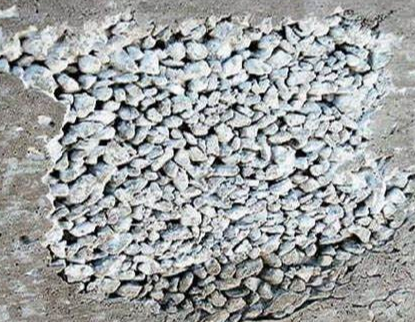How To Treat Honeycomb In Concrete In Del Mar?

- The first step in treating honeycombing is to identify the issue as early as possible. This is typically done during the curing process when the surface of the concrete starts to set but isn’t entirely hardened. Look for visible voids and cavities on the concrete surface, which indicate the presence of honeycombing.
- Before treatment, the surface needs to be prepped. Use a hammer and chisel to remove any loose or weak concrete around the honeycombed area. The objective is to create a sound and clean surface for the new material to bond with the existing concrete.
- It’s critical to select a suitable repair material, usually a patching compound or concrete mix, depending on the severity of the honeycombing. For minor honeycombing, patching compounds work well, while for extensive honeycombing, you might need a high-strength concrete mix.
- Apply the chosen material to the prepared surface. If you’re using a concrete mix, make sure it’s thoroughly mixed and slightly moist before applying it to the honeycombed area. Firmly press the material into the cavity, ensuring it fills all the voids.
- Compacting the repair material is an essential step that prevents the new concrete from developing its own honeycombs. Use a concrete trowel to press the material down, removing any air pockets and smoothing out the surface.
- Allow the patched area to cure properly, ensuring it gains full strength. Cover it with a plastic sheet or curing compound to retain moisture, thereby preventing cracks from drying out.
- Once the repair has cured, consider applying a concrete sealer. This adds an extra layer of protection to the concrete, preventing future honeycombing and extending the longevity of the repair.
FAQ’s
What Causes Honeycombing In Concrete?
Honeycombing in concrete is often caused by improper pouring and compacting of the concrete. It can also result from inadequate concrete mix, incorrect placement of steel reinforcement, and using large aggregate pieces in the mix.
Does Honeycombing Affect The Strength Of The Concrete?
Yes, honeycombing can significantly affect the concrete’s strength. The cavities reduce the concrete’s density, thereby decreasing its load-bearing capacity, and potentially leading to structural failure in severe cases.
Can Honeycombing In Concrete Be Completely Prevented?
While it might not be possible to prevent honeycombing entirely, careful attention to the concrete mix, correct placement and compaction techniques, and using suitable aggregate sizes can significantly minimize the likelihood of honeycombing.
Conclusion
Honeycombing in concrete, while common, can be a significant concern if not addressed promptly. However, by identifying the problem early, using the correct treatment methods, and taking preventive measures, it is possible to maintain the structural integrity and durability of your concrete structures. For more information, contact Concrete Contractor Del Mar at (858) 314-3534.